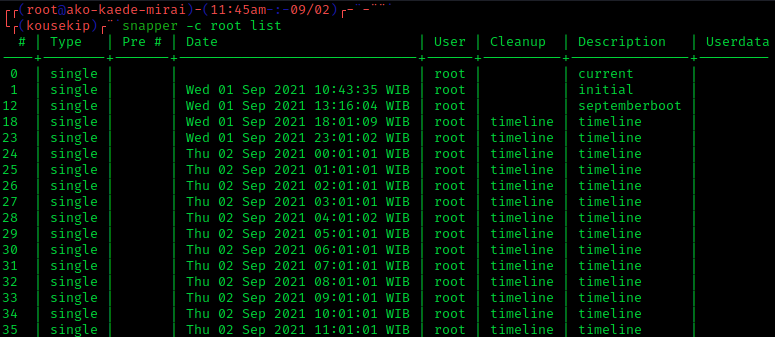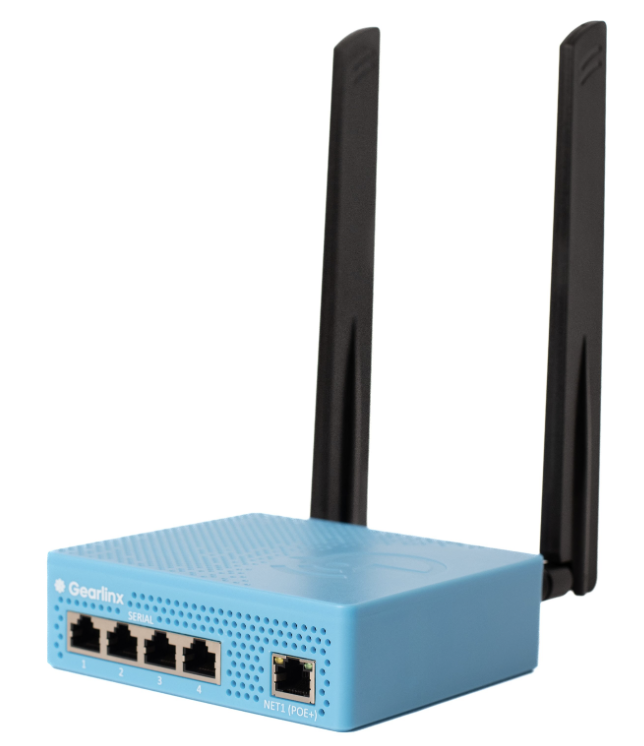|
Migration (virtualization)
In the context of virtualization, where a ''guest'' simulation of an entire computer is actually merely a software virtual machine (VM) running on a ''host'' computer under a hypervisor, migration (also known as teleportation, also known as live migration) is the process by which a ''running'' virtual machine is moved from one physical host to another, with little or no disruption in service. Subjective effects Ideally, the process is completely transparent, resulting in no disruption of service (or downtime). In practice, there is always some minor pause in availability, though it may be low enough that only hard real-time systems are affected. Virtualization is far more frequently used with network services and user applications, and these can generally tolerate the brief delays which may be involved. The perceived impact, if any, is similar to a longer-than-usual kernel delay. Objective effects The actual process is heavily dependent on the particular virtualization package ... [...More Info...] [...Related Items...] OR: [Wikipedia] [Google] [Baidu] [Amazon] |
Virtualization
In computing, virtualization (abbreviated v12n) is a series of technologies that allows dividing of physical computing resources into a series of virtual machines, operating systems, processes or containers. Virtualization began in the 1960s with IBM CP/CMS. The control program CP provided each user with a simulated stand-alone System/360 computer. In hardware virtualization, the '' host machine'' is the machine that is used by the virtualization and the ''guest machine'' is the virtual machine. The words ''host'' and ''guest'' are used to distinguish the software that runs on the physical machine from the software that runs on the virtual machine. The software or firmware that creates a virtual machine on the host hardware is called a '' hypervisor'' or ''virtual machine monitor''. Hardware virtualization is not the same as hardware emulation. Hardware-assisted virtualization facilitates building a virtual machine monitor and allows guest OSes to be run in isolation. Deskt ... [...More Info...] [...Related Items...] OR: [Wikipedia] [Google] [Baidu] [Amazon] |
Virtual Machine
In computing, a virtual machine (VM) is the virtualization or emulator, emulation of a computer system. Virtual machines are based on computer architectures and provide the functionality of a physical computer. Their implementations may involve specialized hardware, software, or a combination of the two. Virtual machines differ and are organized by their function, shown here: * ''System virtual machines'' (also called full virtualization VMs, or SysVMs) provide a substitute for a real machine. They provide the functionality needed to execute entire operating systems. A hypervisor uses native code, native execution to share and manage hardware, allowing for multiple environments that are isolated from one another yet exist on the same physical machine. Modern hypervisors use hardware-assisted virtualization, with virtualization-specific hardware features on the host CPUs providing assistance to hypervisors. * ''Process virtual machines'' are designed to execute computer programs ... [...More Info...] [...Related Items...] OR: [Wikipedia] [Google] [Baidu] [Amazon] |
Hypervisor
A hypervisor, also known as a virtual machine monitor (VMM) or virtualizer, is a type of computer software, firmware or hardware that creates and runs virtual machines. A computer on which a hypervisor runs one or more virtual machines is called a ''host machine'', and each virtual machine is called a ''guest machine''. The hypervisor presents the guest operating systems with a virtual operating platform and manages the execution of the guest operating systems. Unlike an emulator, the guest executes most instructions on the native hardware. Multiple instances of a variety of operating systems may share the virtualized hardware resources: for example, Linux, Windows, and macOS instances can all run on a single physical x86 machine. This contrasts with operating-system–level virtualization, where all instances (usually called ''containers'') must share a single kernel, though the guest operating systems can differ in user space, such as different Linux distributions with the sam ... [...More Info...] [...Related Items...] OR: [Wikipedia] [Google] [Baidu] [Amazon] |
Downtime
In computing and telecommunications, downtime (also (system) outage or (system) drought colloquially) is a period when a system is unavailable. The unavailability is the proportion of a time-span that a system is unavailable or offline. This is usually a result of the system failing to function because of an unplanned event, or because of routine maintenance (a planned event). The terms are commonly applied to networks and servers. The common reasons for unplanned outages are system failures (such as a crash) or communications failures (commonly known as network outage or network drought colloquially). For outages due to issues with general computer systems, the term computer outage (also IT outage or IT drought) can be used. The term is also commonly applied in industrial environments in relation to failures in industrial production equipment. Some facilities measure the downtime incurred during a work shift, or during a 12- or 24-hour period. Another common practice is to ... [...More Info...] [...Related Items...] OR: [Wikipedia] [Google] [Baidu] [Amazon] |
Hard Real-time
Real-time computing (RTC) is the computer science term for hardware and software systems subject to a "real-time constraint", for example from event to system response. Real-time programs must guarantee response within specified time constraints, often referred to as "deadlines". Ben-Ari, Mordechai; "Principles of Concurrent and Distributed Programming", ch. 16, Prentice Hall, 1990, , p. 164 The term "real-time" is also used in simulation to mean that the simulation's clock runs at the same speed as a real clock. Real-time responses are often understood to be in the order of milliseconds, and sometimes microseconds. A system not specified as operating in real time cannot usually ''guarantee'' a response within any timeframe, although ''typical'' or ''expected'' response times may be given. Real-time processing ''fails'' if not completed within a specified deadline relative to an event; deadlines must always be met, regardless of system load. A real-time system has been desc ... [...More Info...] [...Related Items...] OR: [Wikipedia] [Google] [Baidu] [Amazon] |
Kernel (operating System)
A kernel is a computer program at the core of a computer's operating system that always has complete control over everything in the system. The kernel is also responsible for preventing and mitigating conflicts between different processes. It is the portion of the operating system code that is always resident in memory and facilitates interactions between hardware and software components. A full kernel controls all hardware resources (e.g. I/O, memory, cryptography) via device drivers, arbitrates conflicts between processes concerning such resources, and optimizes the use of common resources, such as CPU, cache, file systems, and network sockets. On most systems, the kernel is one of the first programs loaded on startup (after the bootloader). It handles the rest of startup as well as memory, peripherals, and input/output (I/O) requests from software, translating them into data-processing instructions for the central processing unit. The critical code of the kernel is usua ... [...More Info...] [...Related Items...] OR: [Wikipedia] [Google] [Baidu] [Amazon] |
Snapshot (computer Storage)
In Computer, computer systems, a snapshot is the State (computer science), state of a system at a particular point in time. The term was coined as an analogy to that in Snapshot (photography), photography. Rationale A full backup of a large data set may take a long time to complete. On Computer multitasking, multi-tasking or multi-user systems, there may be writes to that data while it is being backed up. This prevents the backup from being Atomicity (database systems), atomic and introduces a version skew that may result in data corruption. For example, if a user moves a file into a directory that has already been backed up, then that file would be completely missing on the Computer data storage, backup media, since the backup operation had already taken place before the addition of the file. Version skew may also cause corruption with files which change their size or contents underfoot while being read. One Backup#Approaches to backing up live data, approach to safely backin ... [...More Info...] [...Related Items...] OR: [Wikipedia] [Google] [Baidu] [Amazon] |
Hard Disk
A hard disk drive (HDD), hard disk, hard drive, or fixed disk is an electro-mechanical data storage device that stores and retrieves digital data using magnetic storage with one or more rigid rapidly rotating hard disk drive platter, platters coated with magnetic material. The platters are paired with disk read-and-write head, magnetic heads, usually arranged on a moving actuator arm, which read and write data to the platter surfaces. Data is accessed in a random-access manner, meaning that individual Block (data storage), blocks of data can be stored and retrieved in any order. HDDs are a type of non-volatile storage, retaining stored data when powered off. Modern HDDs are typically in the form of a small disk enclosure, rectangular box. Hard disk drives were introduced by IBM in 1956, and were the dominant secondary storage device for History of general-purpose CPUs, general-purpose computers beginning in the early 1960s. HDDs maintained this position into the modern er ... [...More Info...] [...Related Items...] OR: [Wikipedia] [Google] [Baidu] [Amazon] |
Script (software)
Script may refer to: Writing systems * Script, a distinctive writing system, based on a repertoire of specific elements or symbols, or that repertoire * Script (styles of handwriting) ** Script typeface, a typeface with characteristics of handwriting * Script (Unicode), historical and modern scripts as organised in Unicode glyph encoding Arts, entertainment, and media * Script (comics), the story and dialogue for a comic book or comic strip * Script (video games), the narrative and text of a video game * Manuscript, any written document, often story-based and unpublished * Play (theatre), the story, dialogue and stage directions for a theatrical production * Rob Wagner's ''Script'', a defunct literary magazine edited by Rob Wagner * Screenplay, the story, dialogue, action and locations for film or television * Scripted sequence, a predefined series of events in a video game triggered by player location or actions * The Script, an Irish band ** ''The Script'' (album), their 200 ... [...More Info...] [...Related Items...] OR: [Wikipedia] [Google] [Baidu] [Amazon] |
Failover
Failover is switching to a redundant or standby computer server, system, hardware component or network upon the failure or abnormal termination of the previously active application, server, system, hardware component, or network in a computer network. Failover and switchover are essentially the same operation, except that failover is automatic and usually operates without warning, while switchover requires human intervention. History The term "failover", although probably in use by engineers much earlier, can be found in a 1962 declassified NASA report. The term "switchover" can be found in the 1950s when describing '"Hot" and "Cold" Standby Systems', with the current meaning of immediate switchover to a running system (hot) and delayed switchover to a system that needs starting (cold). A conference proceedings from 1957 describes computer systems with both Emergency Switchover (i.e. failover) and Scheduled Failover (for maintenance). Failover Systems designers usually pro ... [...More Info...] [...Related Items...] OR: [Wikipedia] [Google] [Baidu] [Amazon] |
Computer Networking
A computer network is a collection of communicating computers and other devices, such as printers and smart phones. In order to communicate, the computers and devices must be connected by wired media like copper cables, optical fibers, or by wireless communication. The devices may be connected in a variety of network topologies. In order to communicate over the network, computers use agreed-on rules, called communication protocols, over whatever medium is used. The computer network can include personal computers, Server (computing), servers, networking hardware, or other specialized or general-purpose Host (network), hosts. They are identified by network addresses and may have hostnames. Hostnames serve as memorable labels for the nodes and are rarely changed after initial assignment. Network addresses serve for locating and identifying the nodes by communication protocols such as the Internet Protocol. Computer networks may be classified by many criteria, including the tr ... [...More Info...] [...Related Items...] OR: [Wikipedia] [Google] [Baidu] [Amazon] |





